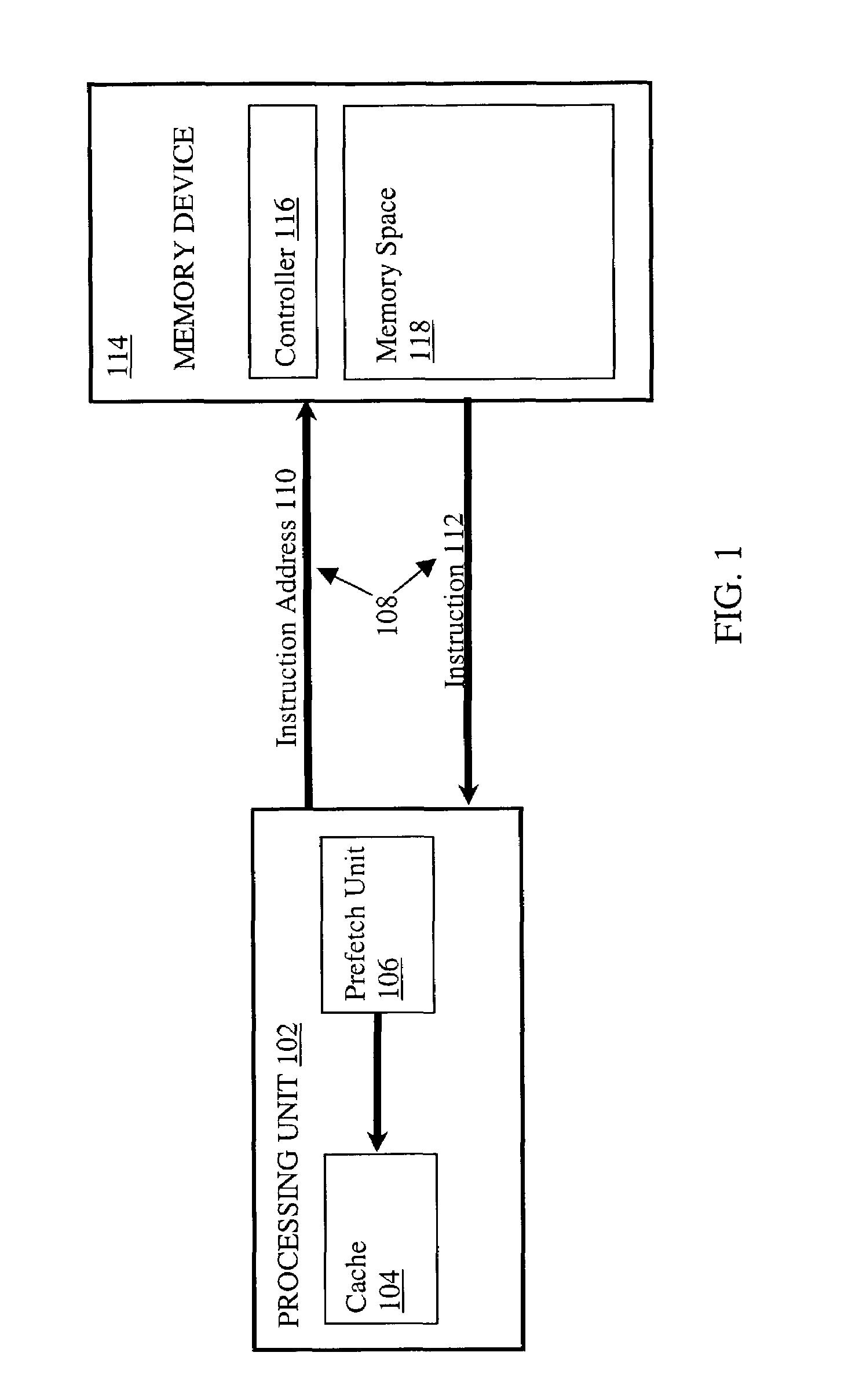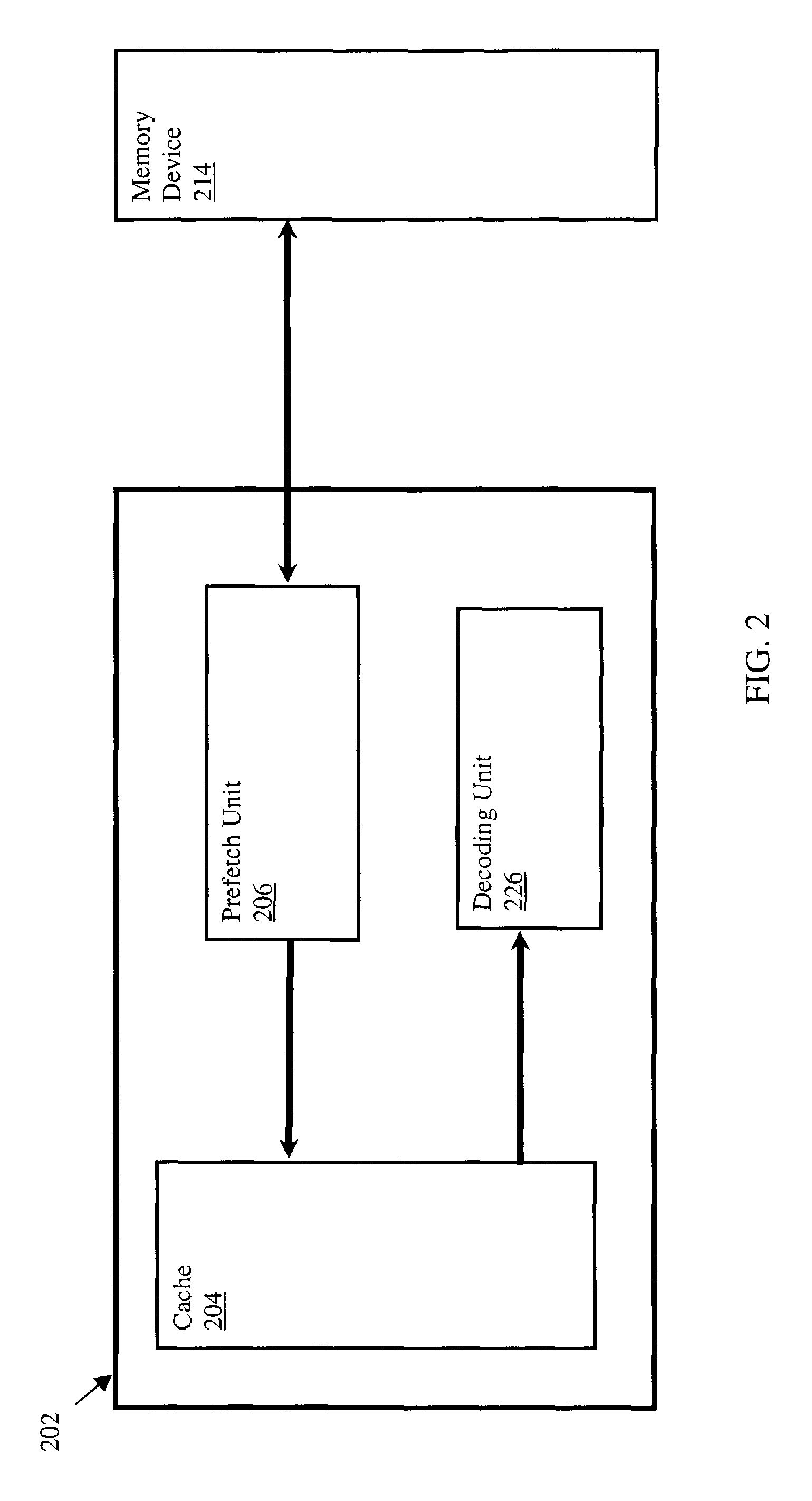Circuit and method for improving instruction fetch time from a cache memory device
a memory device and instruction fetch technology, applied in memory address/allocation/relocation, program control, instruments, etc., can solve the problem that the system that supports variable length instructions cannot be adaptable to a processing unit, and achieve the effect of increasing the instruction fetch time of the processing uni
- Summary
- Abstract
- Description
- Claims
- Application Information
AI Technical Summary
Benefits of technology
Problems solved by technology
Method used
Image
Examples
Embodiment Construction
[0041]As stated above, the concept of prefetching may involve a speculative retrieval of information. FIG. 2, for example, illustrates one embodiment of a circuit for prefetching and decoding instructions under the expectation that processing unit 202 may soon need the retrieved information. As shown in FIG. 2, prefetch unit 206 is coupled to retrieve information from a higher-level memory device, such as external memory device 214, and place the retrieved information into a lower-level memory device, such as cache memory device 204. In some cases, the information retrieved from external memory device 214 may include one or more fixed length instructions.
[0042]In other cases, however, the information retrieved from external memory device 214 may include one or more variable length instructions. In such a case, the one or more variable length instructions may be formatted into instructions having lengths predetermined and adapted for a specific processing unit. Subsequently, the form...
PUM
 Login to View More
Login to View More Abstract
Description
Claims
Application Information
 Login to View More
Login to View More - R&D
- Intellectual Property
- Life Sciences
- Materials
- Tech Scout
- Unparalleled Data Quality
- Higher Quality Content
- 60% Fewer Hallucinations
Browse by: Latest US Patents, China's latest patents, Technical Efficacy Thesaurus, Application Domain, Technology Topic, Popular Technical Reports.
© 2025 PatSnap. All rights reserved.Legal|Privacy policy|Modern Slavery Act Transparency Statement|Sitemap|About US| Contact US: help@patsnap.com



